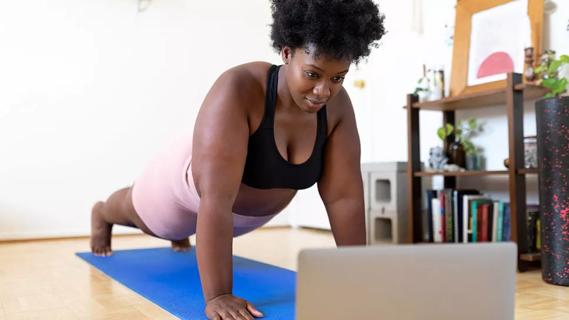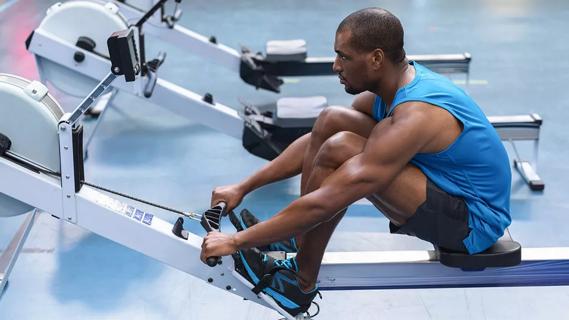Building shoulder strength can minimize your risk of injury

A competitive swimmer may swim six to eight miles a day in training and easily rack up 1 million strokes per year in the pool. Those numbers often equal something else, too: Shoulder problems.
Advertisement
Cleveland Clinic is a non-profit academic medical center. Advertising on our site helps support our mission. We do not endorse non-Cleveland Clinic products or services. Policy
An estimated 65% of swimmers deal with an injured shoulder at some point. The reason? Overuse. Rotating shoulder joints over and over and over again can take a toll on even the fittest athlete.
So, how can you avoid swimmer’s shoulder without just limiting your laps? Let’s dive into the question with physical therapist Kelly Kinsey, DPT.
Your shoulders work as an intricate and unstable network of tendons, muscles and bones. Many moving parts give these ball-and-socket joints an incredible range of motion. In fact, no other joint in your body can match the shoulder’s movement.
An activity such as swimming, however, can push your shoulders beyond their physical limits.
Repeated arm motions against the resistance of water can leave shoulder tendons inflamed and swollen, says Kinsey. This swelling can press on other tendons or nearby bones and muscles, leading to what’s called shoulder impingement.
Tiny tears may eventually develop in tendons and muscles. The damage gums up the works in your shoulders, making basic movement more difficult.
Symptoms of swimmer’s shoulder include:
If you’re splashing through a million swimming strokes per year in a pool, it’s safe to say that you’re at risk for an overuse injury, notes Kinsey. But there are ways to minimize that risk while training.
Advertisement
Want to prevent swimmer’s shoulder? Then work on building strength and stability in your shoulder girdle, meaning the muscles within and surrounding your shoulder.
Shoulder girdle weakness can contribute to a faulty swimming stroke. A breakdown in form can put increased stress on your rotator cuff and biceps, starting a chain reaction that can eventually lead to injury.
The following exercises can help build shoulder strength and improve positioning:
This exercise will help improve scapular alignment and shoulder rotation.
This exercise strengthens underutilized upper back muscles and your shoulder girdle.
This exercise will engage the most muscles in your shoulder girdle.
Most swimmers don’t lack flexibility and actually have a tendency to be hypermobile, says Kinsey. The key is not to overdo it while stretching.
A gentle five to 10-minute upper extremity warm-up should be enough to increase blood flow and prepare your muscles before a workout. Try to avoid partner stretching, which has a tendency to be too aggressive.
Advertisement
Training can bring an expected amount of muscle fatigue and even some aches. But there’s a difference between a “good” soreness and early symptoms of serious injury, which could include:
If the symptoms seem abnormal, try to determine any contributing factors. Was the intensity of your workout higher, for instance? Or did you add miles to your training or change your stroke mechanics?
If there aren’t any good explanations for the symptoms, ease off training for a few days to rest your shoulder and let the joint heal. Get checked by your doctor, athletic trainer or physical therapist if the break in activity doesn’t help.
Ignoring the pain won’t make it go away. If you continue to swim in order to work through the injury, your inflammatory response will increase. That’ll make it harder to diagnose and treat the injury and make recovery more difficult.
“You need to pay attention to your body,” advises Kinsey. “The sooner a potential problem is identified and addressed, the better the chance for a quicker and healthier recovery.”
Advertisement
Learn more about our editorial process.
Advertisement

Losing belly fat can reduce your risk for chronic health conditions — try focusing on a diet high in lean protein, exercising regularly, reducing stress and getting quality ZZZs

It’s best to exercise before or after your fast, instead of during it

Care for your ears by steering clear of cotton swabs, taking precautions in loud settings and seeking medical help when needed

Absolutely! In fact, in many ways, exercise is key to recovery

The exercise — which you’ve probably been doing since grade school — can be intimidating, but proper form can help

Cardio is great for improving cognition, but strength and balance training are just as important

Exercise lowers risk for heart conditions, improves mental health and reduces visceral fat that can compromise your organs

Kids’ yoga can help kiddos become more aware of their physical, mental and emotional selves

Type 2 diabetes isn’t inevitable with these dietary changes

Applying a hot or cold compress can help with pain